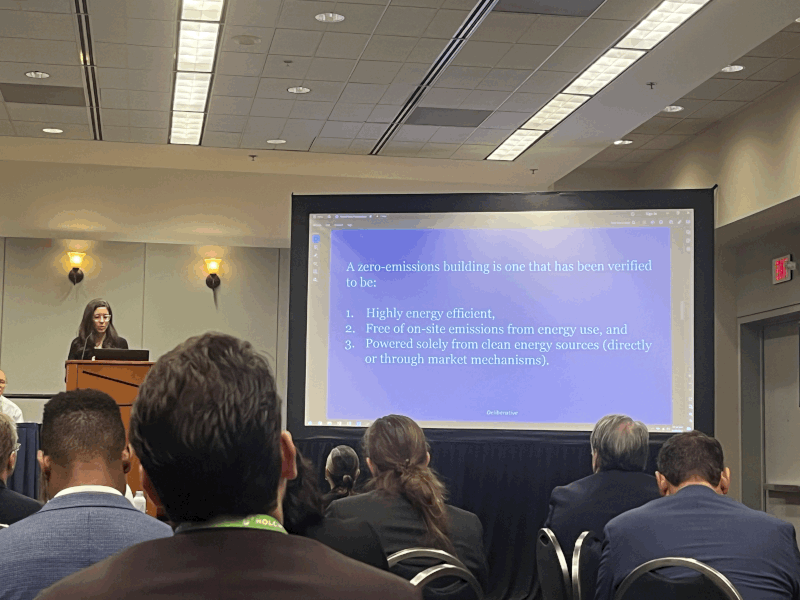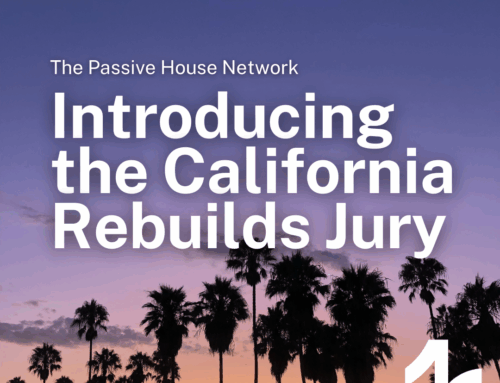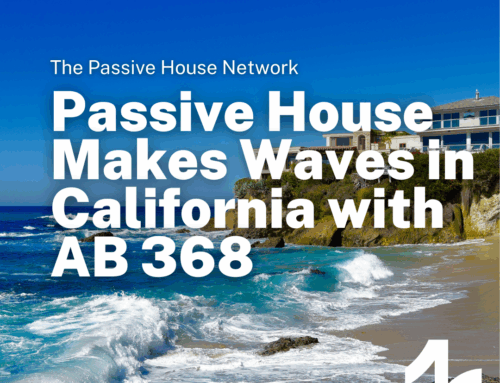The Path Forward:
Stepping Up to the Passive House Policies We Want
The 2023 Passive House Network Conference is off to a roaring start. Yesterday, Passive House enthusiasts from this continent and the next tuned in to our incredible Day One sessions, looking at wildfire resilience, energy modeling, geothermal energy, and more. And there’s plenty more ahead, but before we reconvene in Denver, we invite you to take a look at our latest brief, Stepping Up to Passive.
Those of you who made it to the Codes We Want session got a sneak preview of this brief guide that clarifies best practices in implementing Passive House building codes. In order to get the codes we want, we need to ensure that the market confidence, professional competence, and a robust supply chain is in place to support these codes. Our research has uncovered four steps that, when taken in the right order, reliably implement Passive House building standards:
- Alternate Pathways: Remove the barriers created by the need to develop two separate energy models. Approve use of Passive House models for alternative compliance pathway.
- Passive House Incentives: Implement incentives to build industry capacity, expand product supply chains, and strengthen market confidence in Passive House.
- Add PH Reach & Stretch Codes: Create OPTIONAL reach or stretch codes for local jurisdictions to adopt and implement.
- Transform Baseline Codes: Once sufficient market confidence, professional competence, and a robust product supply chain are in place, the baseline codes can be revised to deliver Passive House outcomes.
This process—start to finish—took only seven years to complete in Brussels and is nearing completion in Scotland. Massachusetts is following the same path, and cities with locally controlled energy codes, such as Denver, are in a similar position to implement this step ahead of state and national codes. For more examples and further explanation of these four steps, read the complete report.
There’s no time to lose. Global and local leaders are calling for action, and these steps are actionable items that we can take to create safe, climate resilient, energy-efficient spaces for all. We at the Passive House Network encourage all jurisdictions to follow these steps to deliver similar, reliably excellent outcomes. The sooner we begin, the sooner we can see and experience the results.
If you were still in doubt that Passive House is the path forward, then stay tuned. Yesterday, the White House officially defined a zero emission building as one that has been verified to be:
- Highly energy efficient,
- Free of on-site emissions from energy use, and
- Powered solely from clean energy sources (directly or through market mechanisms)

This definition is in line with Passive House standards, and we have it on good authority that more is soon to come. Follow along with our blog to stay updated, and continue the conversation on building code policy during the remaining days of the 2023 PHN Conference. We’ll be picking up where we left off during Public Policy & Passive House: A Warming Relationship on October 4th. Registration will give you access to recordings of all the sessions that already happened. Register now and help move the path forward.





